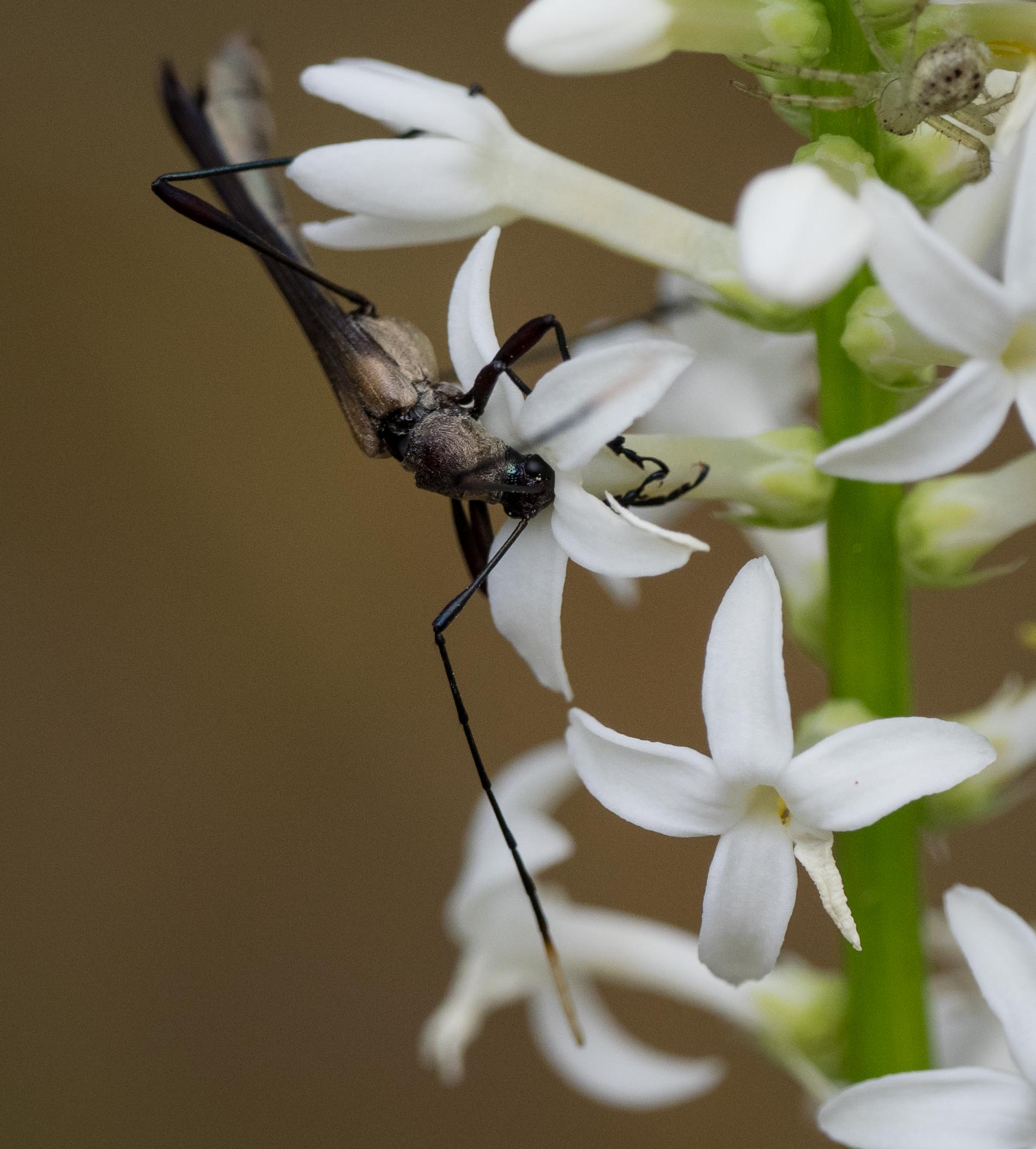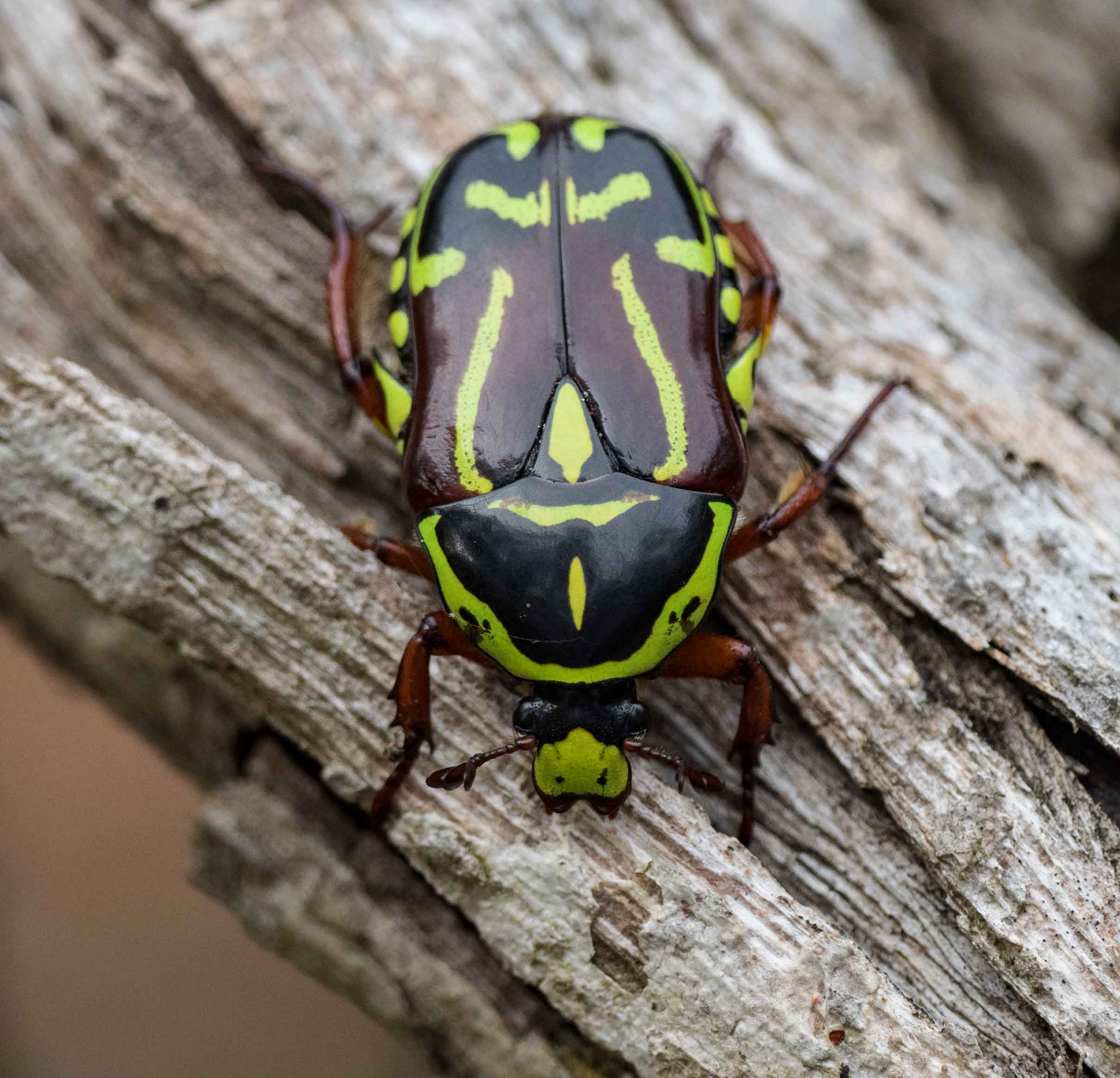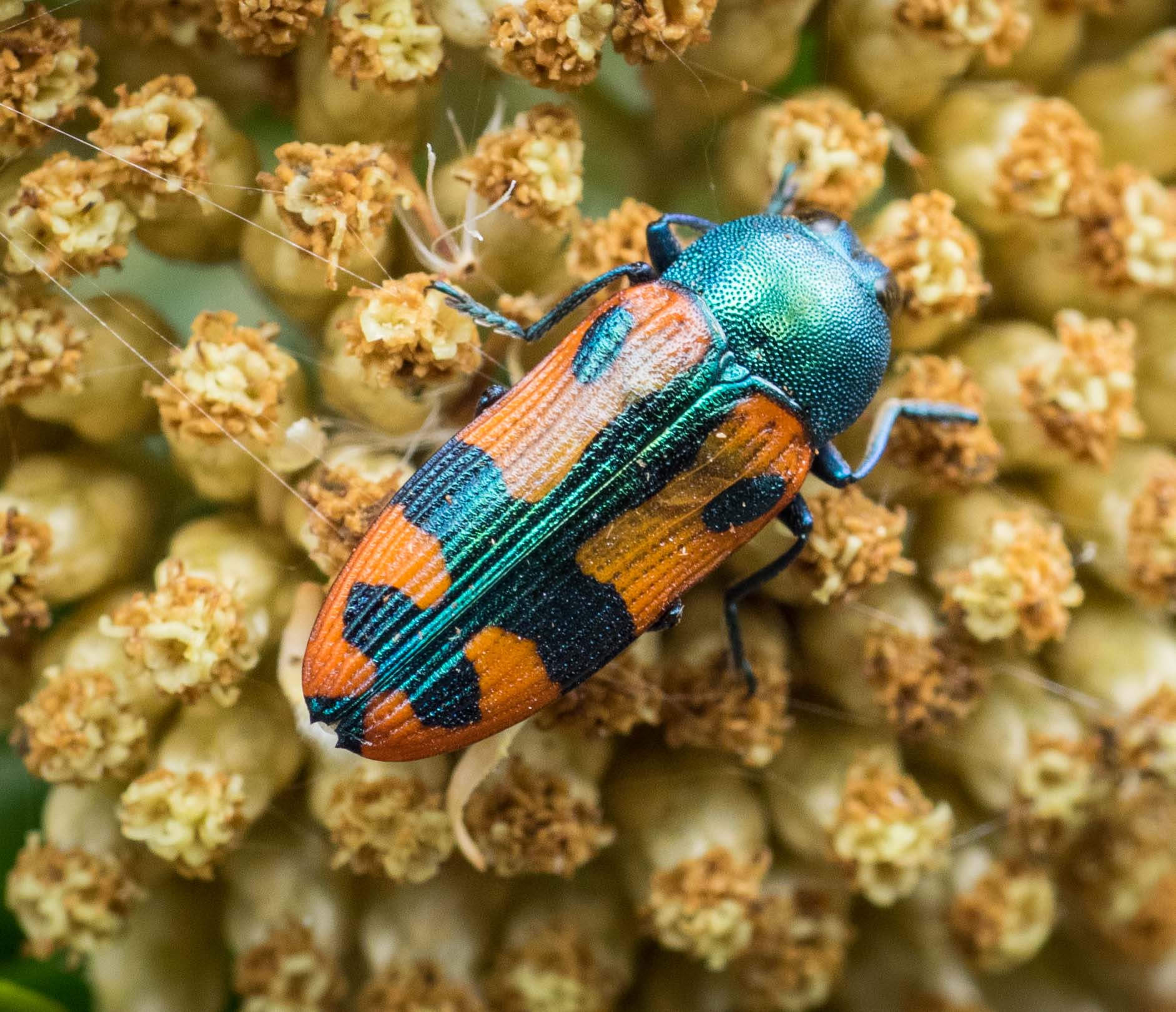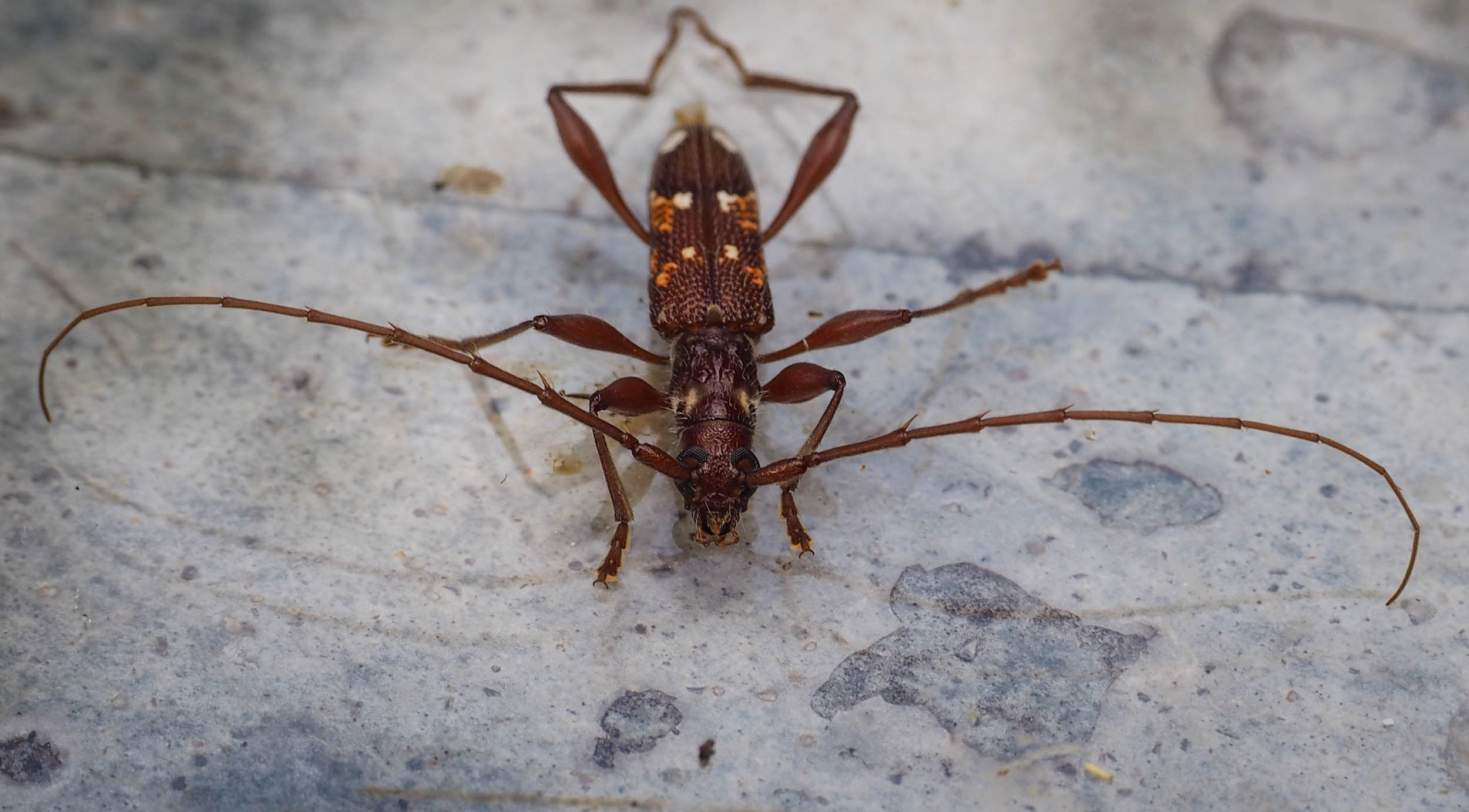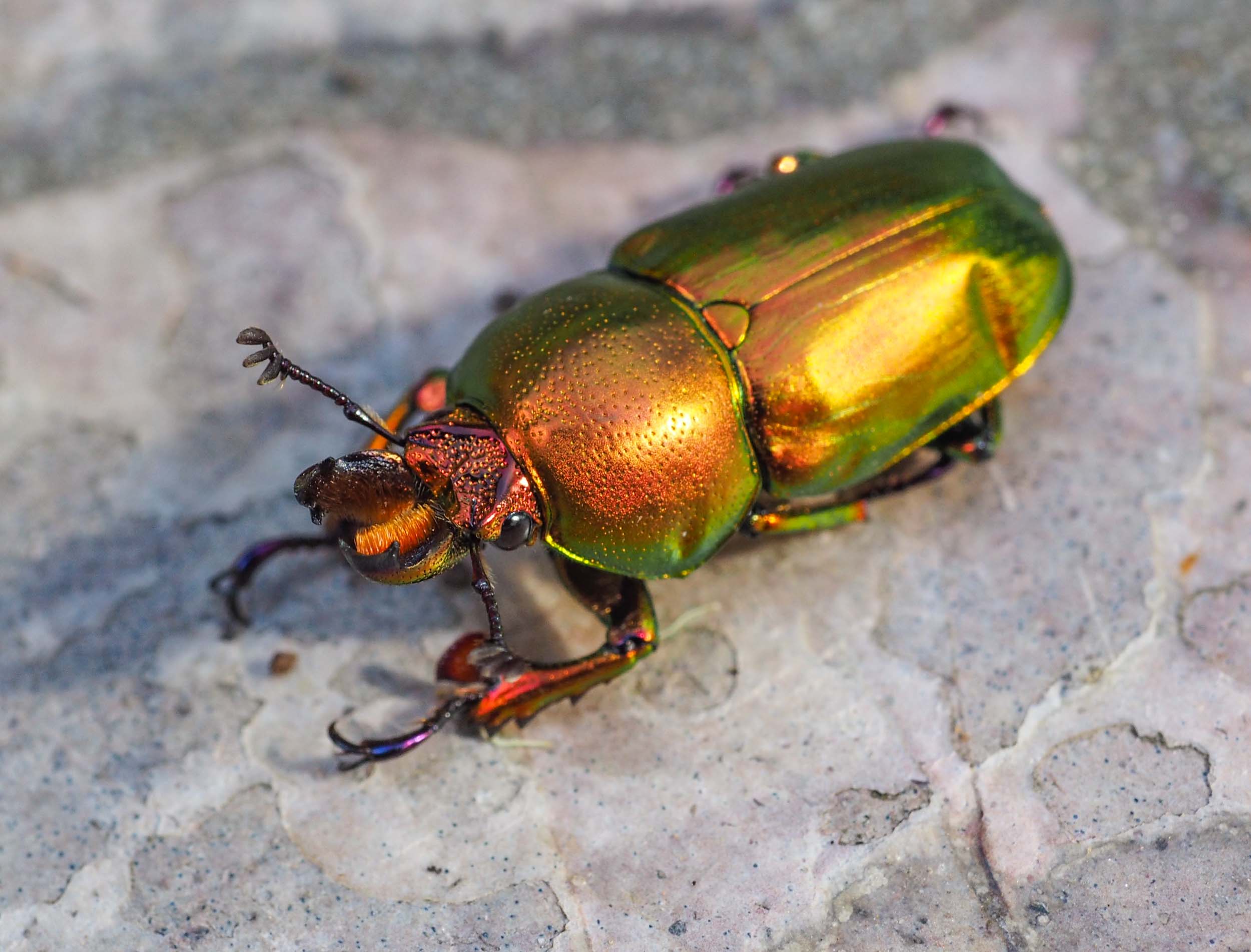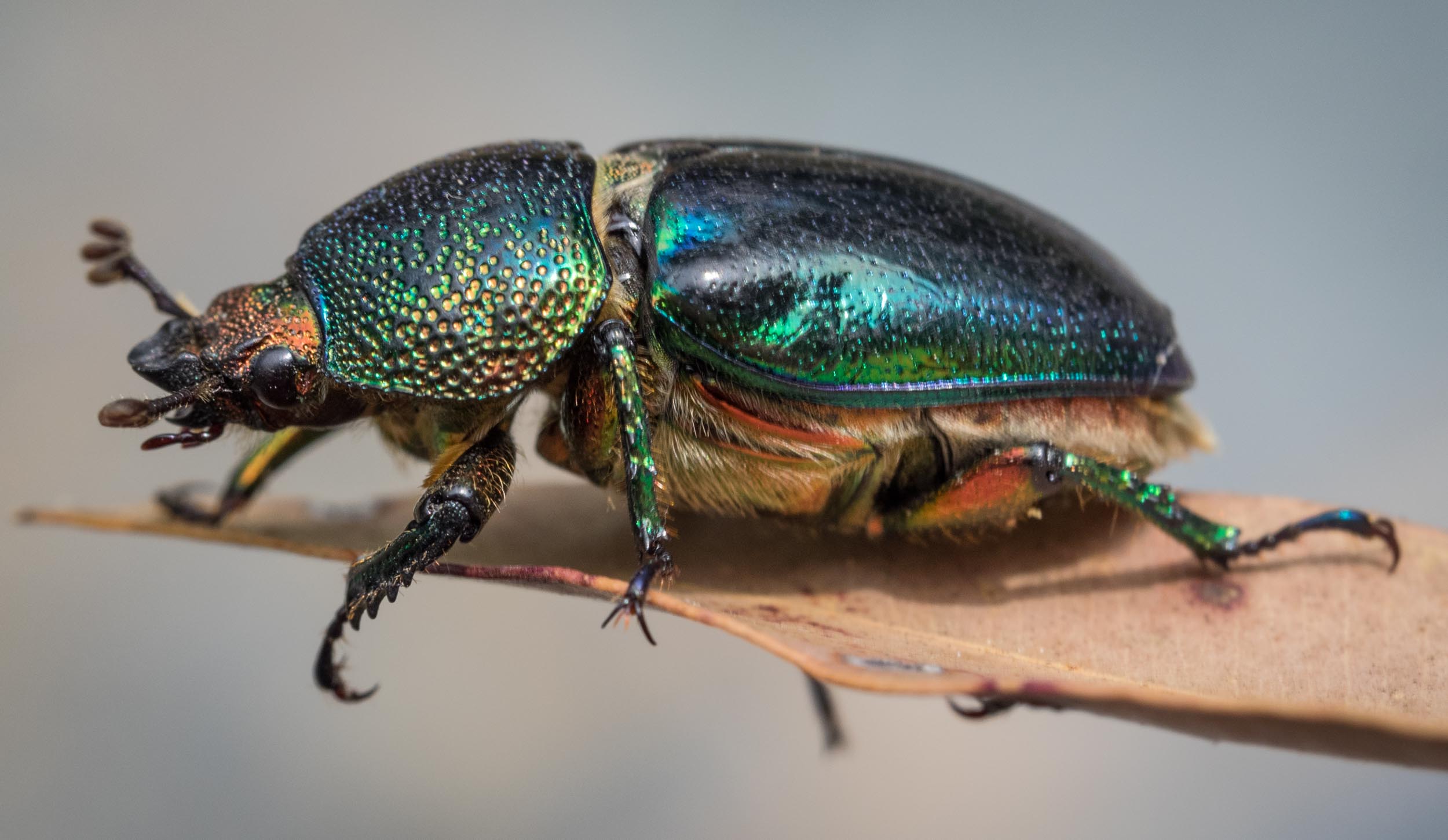Assorted insects: familiar, unfamiliar, and deceptive

The number and diversity of insects continue to build as we move toward mid Spring. For every familiar species there seem to be another two new ones ... it's a challenge to keep pace with our identifications.
Here's a quick tour through some of this week's sightings:
1. Paper Wasp
A lone Paper Wasp (Polistes humilis) started constructing this nest a couple of weeks ago. At least, I assume she is alone ... I've only seen a single insect at any one time. She keeps an eye on me when I visit, but doesn't seem too perturbed.
2. Black Bull Ant
Bull Ants are hunting through the leaf litter again. Black Bull Ants (Myrmecia tarsata) are one of three Myrmecia species we commonly see here in the forest.
3. Sedge Moth
Glyphipterix cometophora
A few days ago I sighted a tiny, silvery-winged moth spiralling among the grasses and low plants. It was a new one for our lists, and quite unfamiliar. It turns out to belong to a family of small moths called 'Sedge Moths' (Glyphipterigidae). The adults are reported to be active during the day, and to remain in the vicinity of their larval food plants. Although little is known about the caterpillars, they apparently feed on grasses, rushes and sedges. And our observations seem to fit the reports: I have seen the adults flying about the exact same patch of sedges for several days now.
4. Another mystery caterpillar
This large, colourful caterpillar is yet another one we've not seen before. It was resting on a Grass Tree (Xanthorrhoea) leaf, although it didn't seem to be feeding. I'll try to raise it through to the adult - and, in the meantime, I'll trawl through our references for some hint as to its identity.
5. Wasp-mimicking Longhorn Beetle
A couple of weeks ago we saw one of these slender-bodied insects for the first time. And it had us stumped at first. The narrow ' waist' and long abdomen suggested 'wasp'. But a close look at the wings show the toughened first pair characteristic of beetles.
It is an unusual longicorn beetle, appropriately called a 'wasp-mimic' (Enchoptera apicalis). Its rostrum seems tailor-made for feeding from the beautiful, tubular flowers of Stackhousia.









